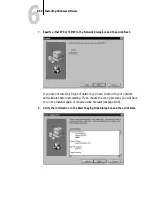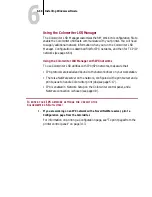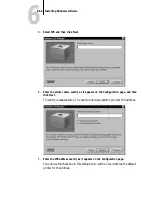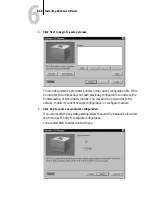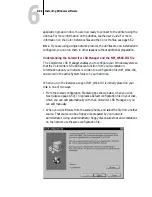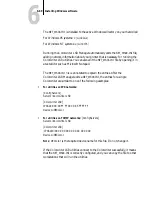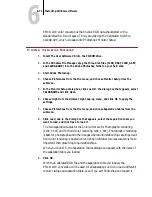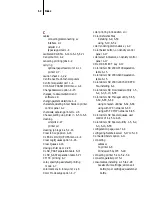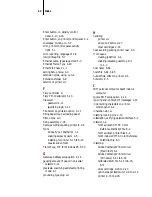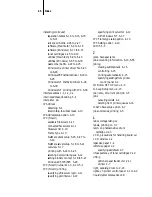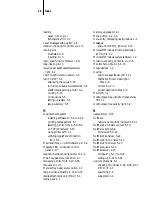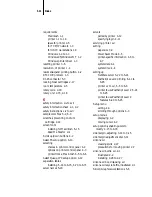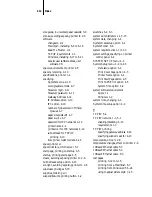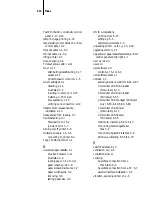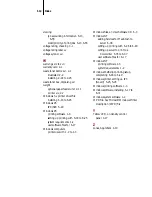
6
6-70
Installing Windows software
N
OTE
:
The utilities require one additional file, depending on the network type.
When you run the Installer, it places a
.DLL
file for the network type you chose, in
the system directory of your hard disk:
•
Utilities on IPX networks require a
NET_WIPX.DLL
file in the
System
directory.
•
Utilities on TCP/IP networks require a
NET_WSCK.DLL
file in the
System
directory.
N
OTE
:
If you run the Installer a second time, and choose a different network
protocol, the second
.DLL
file is placed on your disk. Only one of these
.DLL
files
should be active in your system at any time. If both files exist in your system
directory with their original names, they conflict, and the Colorwriter LSR
utilities do not function.
N
OTE
:
To manage the use of two network protocols, you should run the
Colorwriter LSR Manager right after you install the utilities.
When you run the Colorwriter LSR Manager, you choose the active network
protocol for the utilities. If both
.DLL
files are present, the Colorwriter LSR
Manager substitutes a tilde (~) for the last character in the
.DLL
filename for the
network protocol you did not choose, making that
.DLL
file inactive and
eliminating any conflict.
If you decide later to switch protocols, run the Colorwriter LSR Manager again. If
both
.DLL
files are present on your system, the Manager updates the configuration
file and also switches the active network protocol.
Installing the Monitor Setup file and Separation Tables
The files in the
Sep_tabl
folder on the User Software CD are for use with Adobe
Photoshop for Windows. These files provide
EFICOLOR
data conversions when
Photoshop converts images from one mode to another, such as when it converts
color data between RGB, Lab color, and CMYK color spaces.
Mode conversions are commonly used when you use Photoshop to print an image
specified in RGB mode to a printer (such as the Colorwriter) that uses CMYK
toner colors. They are also used when you use Photoshop to save separations.



